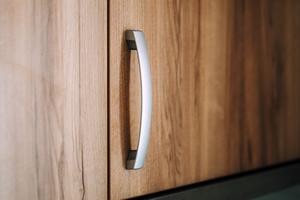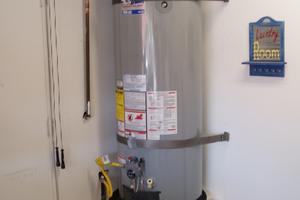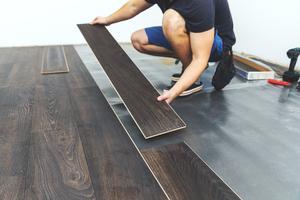Home & Leisure
/ArcaMax

Do It Yourself or Not: Repair concrete
For safe footing, a concrete walkway should be smooth and level. A hole or crack in concrete makes it a likely place where you or a passerby can trip or fall. Don’t ignore the damage that will only become worse; repairing it sooner rather than later is a good idea. If it’s ignored, the surface will continue to deteriorate. You can hire a ...Read more

Do It Yourself or Not: Paint a magnetic wall
Be creative in a kid’s room or playroom with a magnetic wall using a specialty magnetic primer as a base coat. The coating allows you to create a wall surface similar to your refrigerator for whatever can be held in place with a magnet. A wall in a home office is another popular place to use magnetic paint. The magnetic primer can be applied ...Read more

Do It Yourself or Not: Reface kitchen cabinets
Anyone who has replaced kitchen cabinets will tell you it’s a big dollar home improvement. An alternative is refacing, not replacing the cabinets. The reason is that refacing doesn’t tear out the existing cabinets, it adds a new laminate surface to their base, fronts, sides and doors. It’s a good alternative to replacing them if the ...Read more

Do it Yourself or Not: Build utility shelving
Take control of your clutter in a garage or basement by adding basic utility shelves, and store all your stuff in orderly fashion. We like using Simpson Strong-Tie metal connectors with sheets of plywood to make sturdy utility shelves. They won’t win a beauty contest, but they’re a practical solution to getting organized.
Most of the work ...Read more

Do It Yourself or Not: Install a hot water dispenser
If you enjoy instant hot drinks and soups, you know instant hot water is a nice convenience. Sure, you can use a microwave oven for a cup of tea, but a hot water sink dispenser is much better. Ask anyone who has one at their sink and they’ll probably tell you it’s something they can’t live without. Since the missing ingredient for many ...Read more

Do It Yourself or Not: Replace a gas hot water heater
When a gas-operated heater stops producing hot water, usually after a good service life of 10 years or more, a replacement unit is needed sooner, not later, to keep everyone happy and humming along. You or a family member will be the first to know and react, because a hot water heater is one of those behind-the-scenes appliances that always ...Read more

Do It Yourself or Not: Install a tile backsplash
Want to refresh the look of a kitchen without spending a lot of time and money? Install peel-and-stick vinyl tiles as a backsplash to the wall below the cabinets that join the surface of the countertop. This is a quick-fix solution and easy job that protects the wall surface, often prone to splashes of food or sauce during food preparation. ...Read more

Do It Yourself or Not: Make a fabric window cornice
A cornice or window topper is a good choice to complete a room’s décor, whether the window is a casual setting with blinds or a shade, or a more traditional style with draperies. Whatever the style, a fabric cornice adds a custom touch to any window. You can make one with a cornice board kit, which you assemble with polystyrene sections, two ...Read more

Do It Yourself or Not: Install a laminate plank floor
For a hardworking floor surface, you can’t go wrong with prefinished laminate planks. They’re affordable and easy to install, and they come in many styles and colors. Many lines of the laminate plank flooring provide a built-in underlayment — an installation shortcut that gives the surface the realistic sound of natural wood planks. Some ...Read more

Do It Yourself or Not: Install a pull-out sink faucet
A pull-out faucet in a bathroom sink makes it more useful than a two-handle faucet because it’s designed for many uses. Some of today’s bathroom sinks can be used for bathing a small infant, washing a kid’s hair, and even scrubbing dirty sneakers.
If the bathroom sink in your house gets a workout, consider replacing the existing faucet ...Read more

Do It Yourself or Not: Install a ceiling light, fan and heater
A bathroom often needs additional heat, especially in the winter months when the room can be colder than the rest of the house. While a small wall or free-standing heating unit is one solution, a ceiling fan and heater is another that takes up no floor or wall space. The heater and fan can be operated separately or combined.
An electrician will...Read more

Hang embossed wallcovering
If you like the traditional look and feel of Old World walls, consider using these embossed wallcovering panels that add textural interest to the walls and lasting character to the room. In many historic homes the rich and distinct look doesn’t cover the entire walls. Instead, the panels were commonly used as a dado covering the lower third of...Read more




























